Stories
Reports, interviews, essays, and opinions about music and its connection to business and society.
The Story Behind «Pool Song»
A song embodying Lea Porcelain’s strive for eternal sound and how it came to life.
All of a sudden, there is this unexpected drumbeat, soon merging with the bass into a rhythm and reverberating in the void. At the same time, the synthesiser emerges from the shadows, two alternating tones like a drawn-out siren. The sound swells, humming, a flood that sweeps you away and drowns you.
Pool Song is infinity cast in music. It is the crowning achievement of the German duo Lea Porcelain’s previous—if not already completed—work. In this piece, their search for eternity manifests itself and is perhaps the moment they come closest to this goal.
They were an unlikely pairing: Markus Nikolaus, an indie musician and singer-songwriter, and Julien Bracht, an up-and-coming techno producer. Two straying planets that unexpectedly found themselves in the same orbit.
In 2016, they released the first singles as Lea Porcelain, including Warsaw Street. There was this post-punk sound, the almost depressive mood of a Joy Division song, combined with the fading synthesiser pads.
Lea Porcelain created two albums: Hymns To The Night (2017) and Choirs to Heave* (2021). Both offered outstanding songs. In between, they released the EP Love Is Not An Empire, which featured I Am OK, a surprisingly light, ukulele-driven song that became their biggest hit.
After a crowning tour finale at the Funkhaus Berlin, the creative headquarters of Lea Porcelain, the band went silent. Markus Nikolaus pursues his label «Porzellan Bar» and various other projects, and Julien Bracht is working as EMPIRICAL towards his goal of performing at «Coachella».
For the time being, centrifugal force seems to have overcome gravity; the future of Lea Porcelain is written in the stars.
Exhaustion in Rio de Janeiro
Pool Song was created on the other side of the globe, far from Lea Porcelain’s home, in Rio de Janeiro. In a villa in the hills, owned by Uwe Fabich, the ex-banker and owner of Funkhaus. Their stay there was his way of saying thank you for their work in the artist community.
Baptism of Fire for the «Songs of Homecoming»
The Beauty of Gemina started the tour in Zurich and performed every song on their new album «Songs of Homecoming». How did they hold up?
It’s a dreary Thursday evening. Rain has been pouring down all day, yet it seems fitting for the occasion. «It rains a lot in Gemina-land,» Stephen Kennedy wrote in 2014. The rain remains a recurring image in The Beauty of Gemina’s songs—most prominent in Dark Rain or the new track Vail of Rain.
I’m on my way to their concert, trying to count the times I’ve seen this band on stage, but I fail. It should be close to 20 times by now. A ridiculous number. From a writer’s perspective, there’s no justifiable reason to see a band so many times live. But, to be fair, the bulk of those shows lay far in the past.
In all those years, however, I never experienced a bad show. Yes, there were problem-riddled ones, mediocre ones. But never a terrible one. Maybe I got lucky?
I’ll tempt my luck again this night for two particular reasons:
- They play the songs from their new album, Songs of Homecoming. How will they hold up?
- As Michael Sele proclaimed in our interview, the current line-up is the best band in their history. Can they live up to the praise?
The only caveat worth mentioning here: It’s the first show of the tour. An evening that puts The Beauty of Gemina truly to the test on multiple fronts.
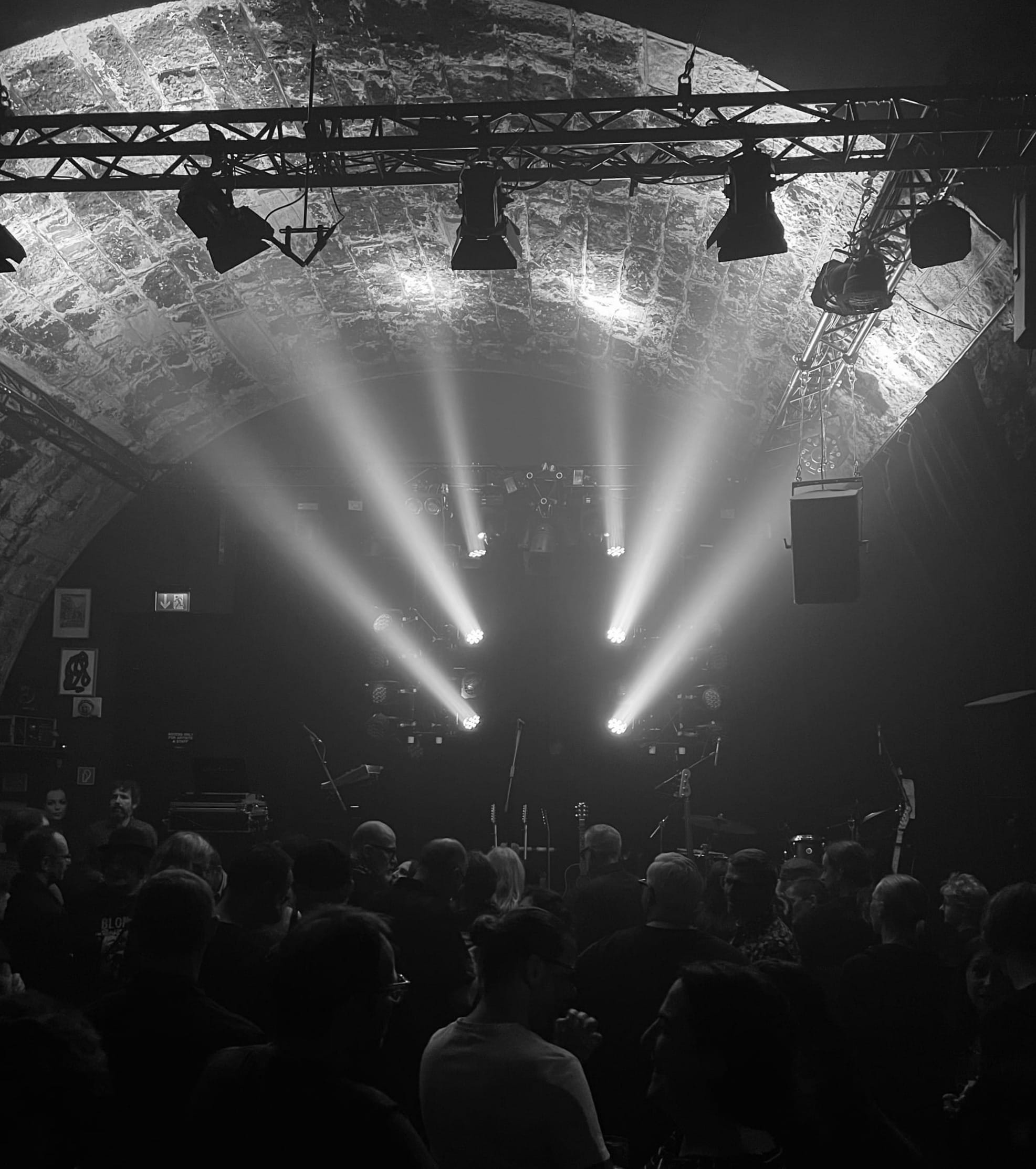
With the jacket zipped up to the very top and the hat drawn deep into my face, I walk through the nightly rain towards the venue, «Bogen F». This small concert room is nestled in one of the arches of a train viaduct has a special ambience. There’s a notion of a basement club within these mighty brick walls. But also a lofty feel thanks to its height.
People rush by on the shimmering asphalt, desperate to get to their warm, dry homes. This weather is a concert killer. Venues and concert promoters struggle. Usually, pre-sales are horrible, the rising number of no-shows puts a dent in bar revenue, and people generally decide spontaneously whether to attend a show or not.
 Negative WhiteJanosch Troehler
Negative WhiteJanosch Troehler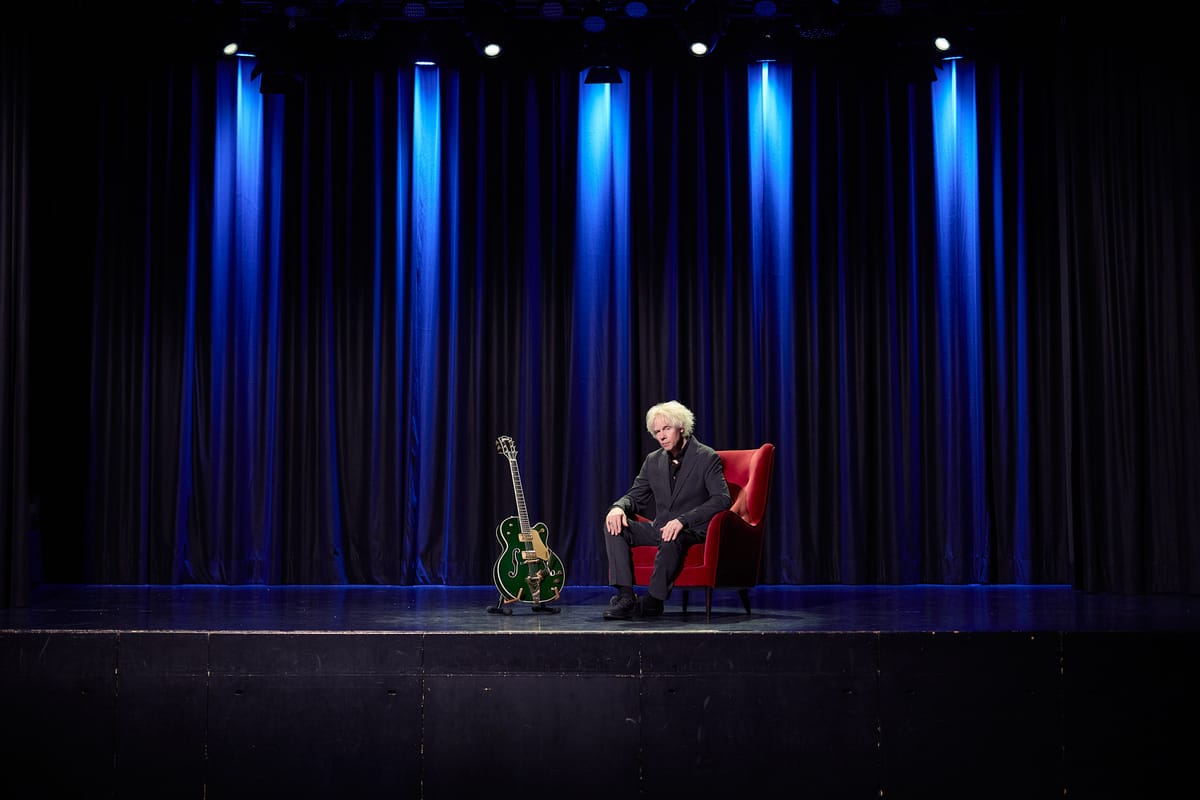
But The Beauty of Gemina have been around for 17 years now. Although they never fully broke through into the mainstream, they have cultivated a dedicated fan base over the span of ten studio albums and hundreds of concerts. It’s one of the bands that will remain sort of a secret tip, recommended by the initiated, and successful in its own regard.
The concert wasn’t sold out, but despite the weather, the room was packed. The audience aged with the band; only a few visibly young individuals were in the crowd. And, noticeably, ambassadors of the wave and gothic scene, where the band originated, were definitely in the minority.
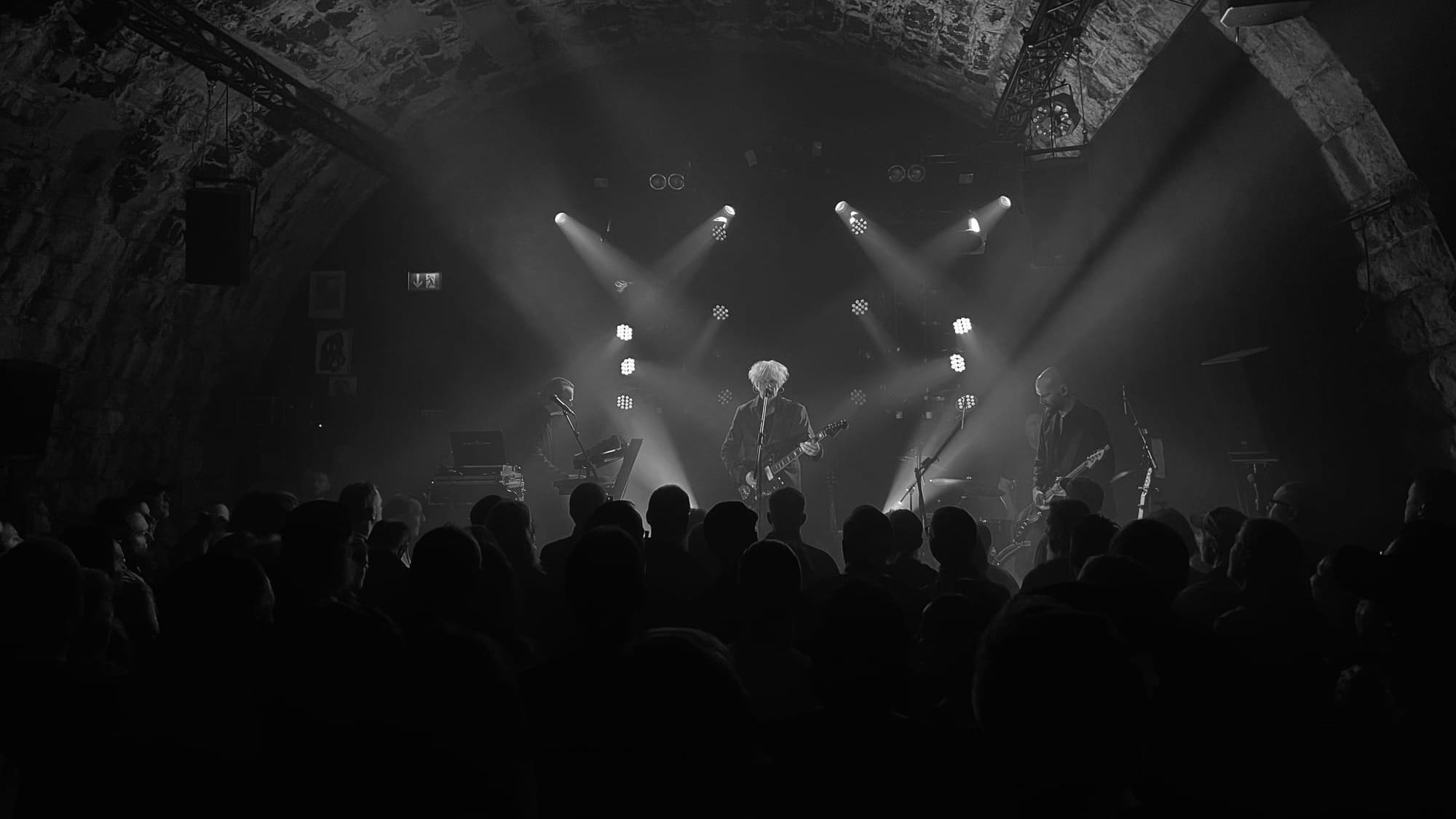
Shattering bass drones introduced Dreams of the Vagabonds, and the show began. But not without some technical problems. Electrical feedback from the guitar, paired with concerned glances by the musicians.
The second song, Whispers of the Seasons, didn’t inspire confidence either. Frailing, as if the band was disconnected, it also felt awfully noisy, and the contrast between the vulnerable verses and the hopeful chorus drowned.
But then, the band found its stride. With End and Crossroads, they celebrated the 2016 album Minor Sun, played vigorously and with confidence. Followed by Veil of Rain, where they lowered the full weight of this slow and heavy dark wave track with clarity and precision on the collective souls.
Everything the audience could hear that evening was played live, thanks to keyboarder Daniel Manhart, the most recent addition to the line-up, and Mac Vinzens hitting a hybrid drum. Combined with the musical development, The Beauty of Gemina can play liberated as never before.
Most apparent became this freedom with One Step to Heaven, a song from their debut album which received a rework last year. The song became lighter and gained space, which the band used to deliver an extraordinarily excellent performance which only enforced its psychedelic, trance-provoking nature.
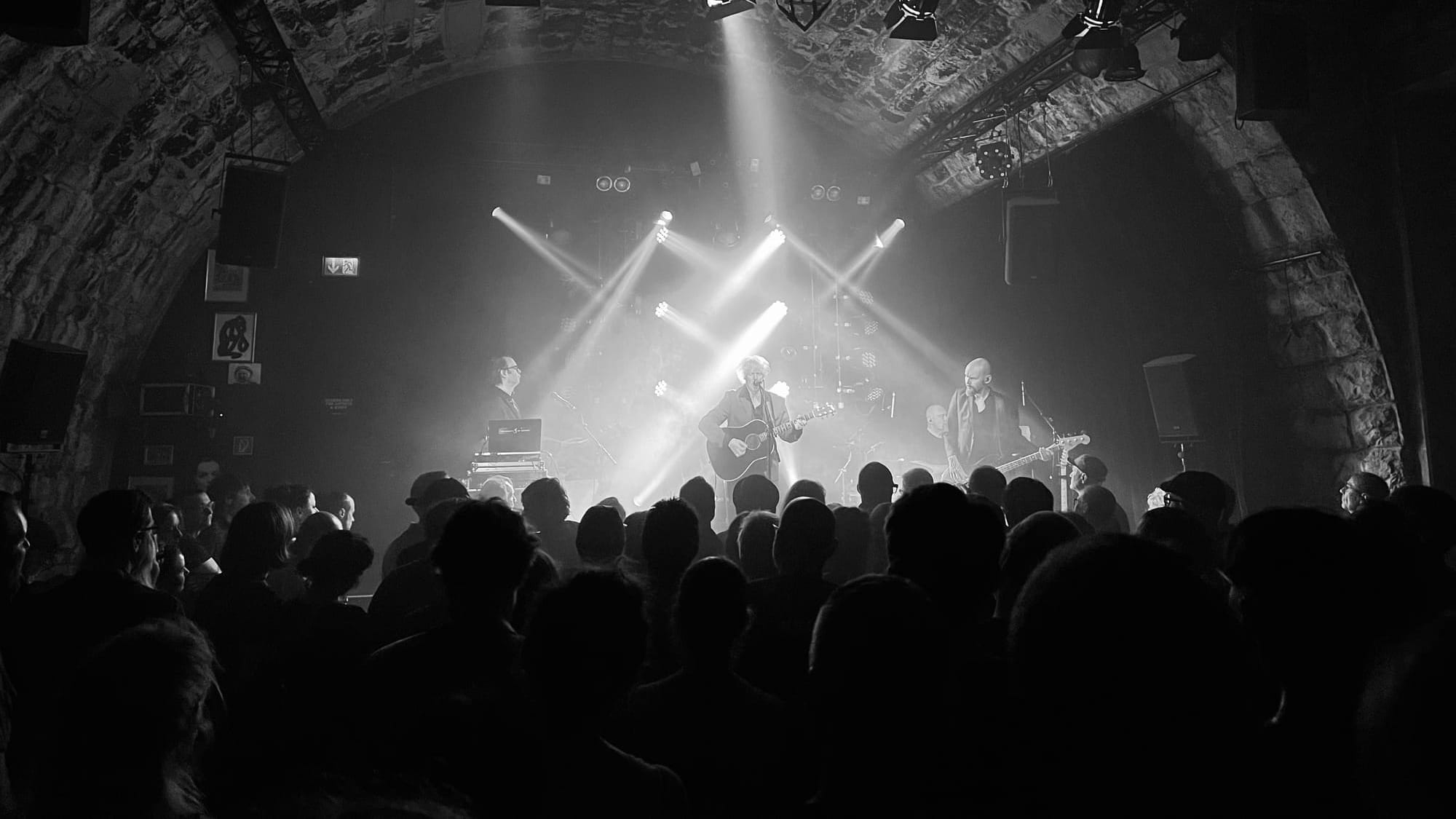
The Beauty of Gemina made bold choices for the tour. Not only did they waive to add the band’s hit, Suicide Landscape, to the setlist, but they played every single song from the new album live. Interlaced with reliable classics from their repertoire like Rumours or the haunting River, the new songs—with the exception of Whispers of the Seasons—worked perfectly on stage.
Now, it’s worth taking a breath and thinking about the significance of this feat. No other album in the band’s oeuvre has this all-around live quality. And few bands will ever release an album that works on stage as well as it does on the record.
Regardless of the technical challenges and the few occasions Sele struggled with his lyrics on King’s Men Come and Endless Time to See, the band’s performance was professional throughout and, at times, extraordinary.
It’s not a wild and exuberant rock show. Instead of gimmicky visuals and an extrovert attitude, you’ll find restraint, nuance and sophistication with small outbursts of sparks and brilliance. Especially when they pull into a longer instrumental part.
 Negative WhiteJanosch Troehler
Negative WhiteJanosch Troehler
So, back to my questions. Did the Songs of Homecoming pass the test of live performance? Definitely, almost to incredible perfection.
And is it the best live band ever to call themselves The Beauty of Gemina? Well, that’s hard to say from one single show. It certainly wasn’t their best-ever gig; they had a bumpy start—coupled with the nervousness incumbent of a tour start. And yet, throughout the 90 minutes, they only gained confidence and energy. That’s a promise.
«It was awesome,» a woman tells her friend. The rain stopped, and the ship came in. A fire crackles in the metal pit outside, drowning everything in its proximity into a golden glow. The baptism of fire for The Beauty of Gemina and Songs of Homecoming is accomplished.
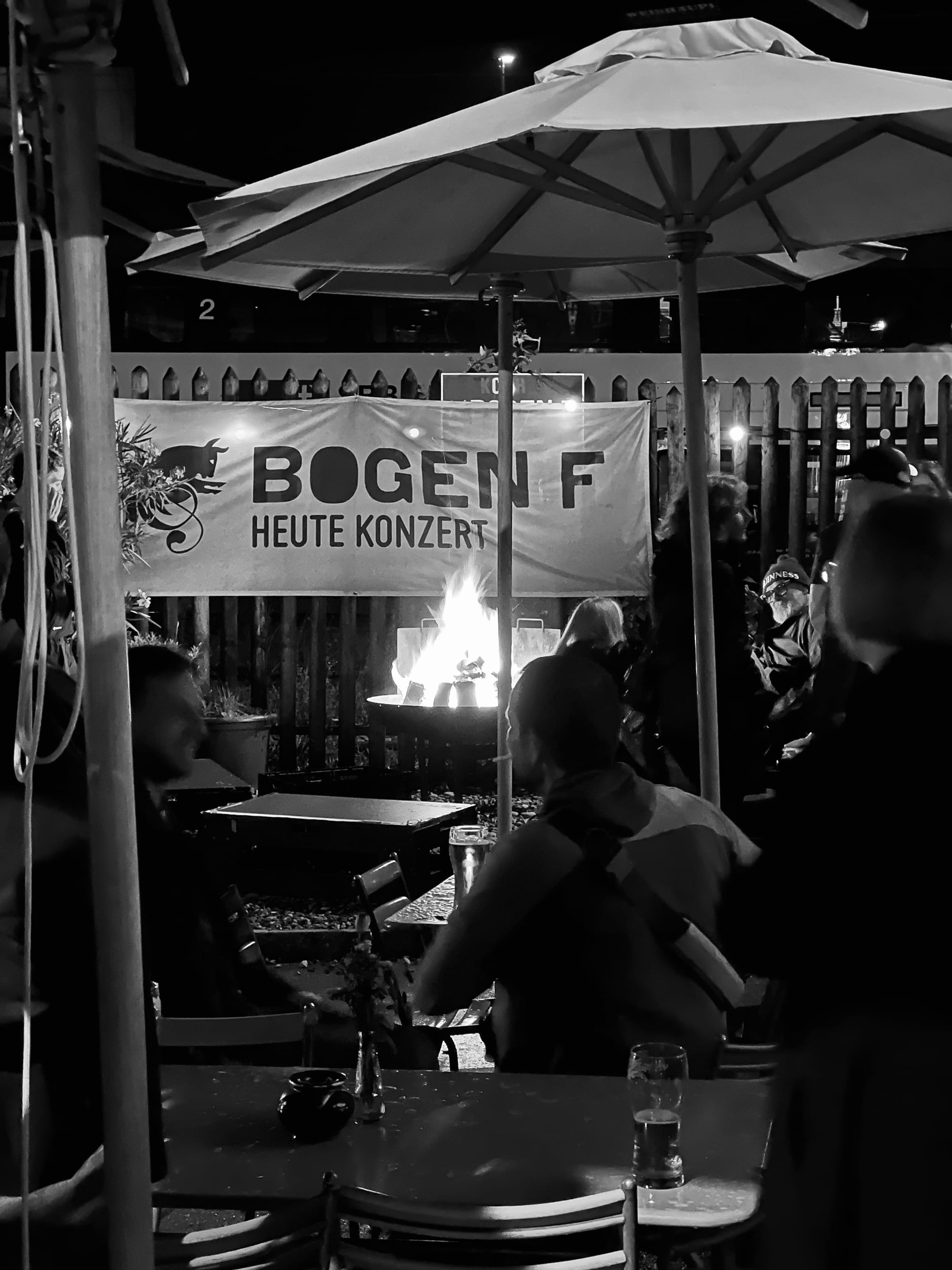
«Never before has an album been as self-contained as ‹Songs of Homecoming›»
The Beauty of Gemina’s Michael Sele about the new album, closing a circle, and how illness and the pandemic fuelled his confidence as an artist.
With Songs of Homecoming, The Beauty of Gemina are about to release their 10th studio album. It is an intimate record featuring well-rounded compositions that bridge the band’s early dark, electronically driven gestures and the playful acoustic nuances from recent years.
Negative White sat down with the band’s creative mind, Michael Sele, at «Altes Kino Mels», his musical home base, for an extensive conversation. Across from us sat a man who found his confidence as an artist rather than a part of a band.
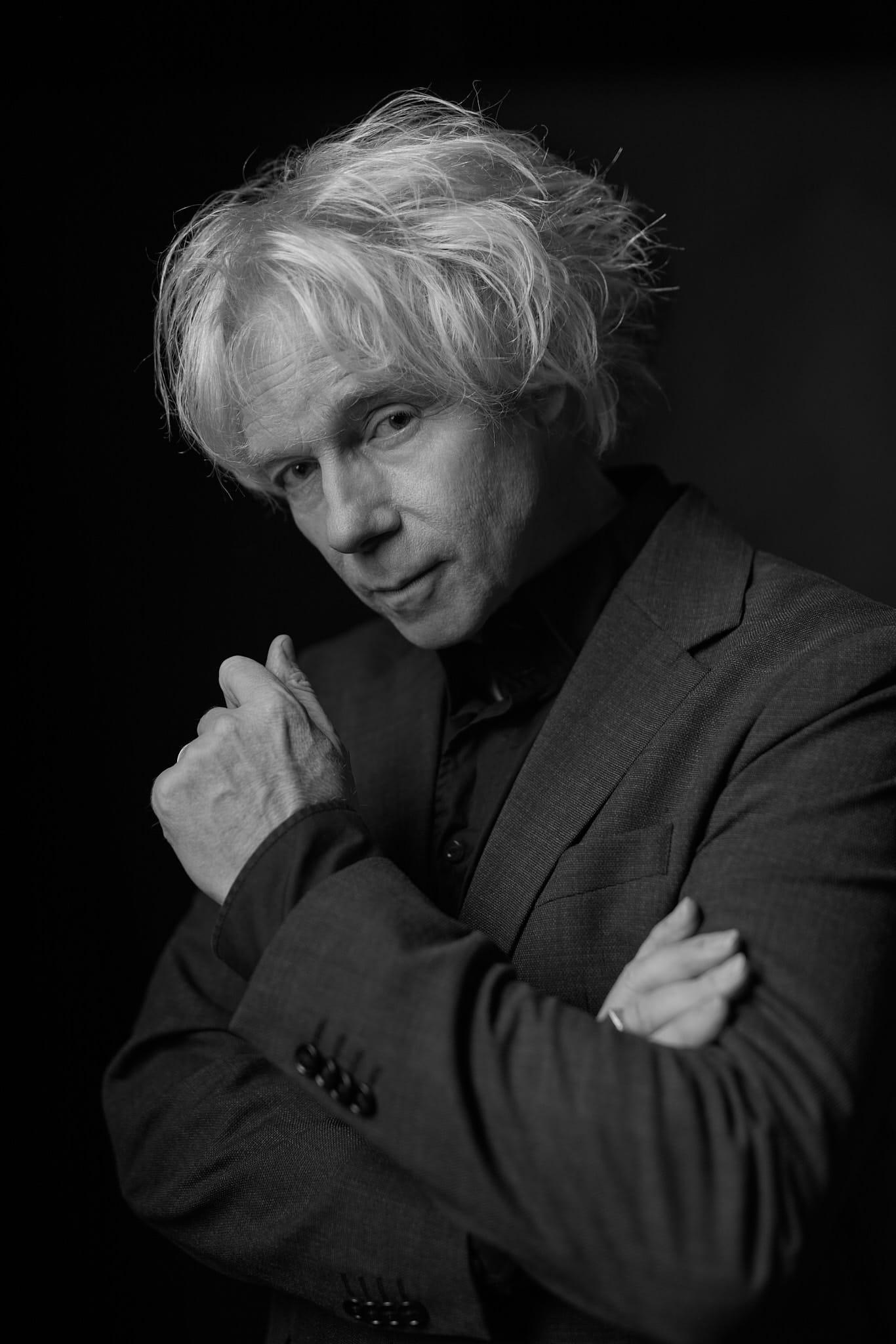
Michael, we last spoke officially eight years ago, before the release of Minor Sun. Looking back, what was the most influential moment for The Beauty of Gemina?
It’s difficult to pinpoint the most formative moment. Shortly before Minor Sun, there was another big personnel change in the band. These changes have followed me throughout the years of the band’s history. Minor Sun was the moment that led me to where I am today: I gained more self-confidence and put myself at the centre. The romantic notion of the band at the centre disappeared. It’s easy to say you’re the bandleader now, but it was a long process with many small steps.
Another critical moment was our first visit to South America in 2018. An autograph session was organised in Mexico; many came with things for us to sign. Printed fan artwork and flyers from all phases of the band, and I realised that the musicians constantly change; only one thing is the same: me and, of course, Mac Vinzens.
That’s when I realised that it’s all about this person. Clearly, music plays an important role, but it is immediately associated with me as an artist.
It’s interesting that you saw The Beauty of Gemina more as a band until Minor Sun. From an outside perspective, I would argue that it was always the artist Michael Sele and a changing cast of musicians around him. At the same time, my impression is that The Beauty of Gemina is more of a band today.
Yes, emotionally, I’m absolutely with you. The live band is undoubtedly the strongest formation I’ve ever had.
However, you must differentiate between two aspects: The musicians on stage are not the same as in the studio. For the production, I often worked with people in the studio who were never mentioned afterwards.
This was often not realised and is also the fault of digitalisation. On streaming platforms, there is hardly any information about the people behind the music. It’s madness that this is being lost today.
In any case, I created the last three albums mainly with my long-time companion, Philipp Küng. He was also involved earlier, but I only really mentioned this for the first time in my book.
What makes today’s live band the strongest formation in The Beauty of Gemina’s history?
I feel that, for the first time, everyone involved is purely about the music. That certainly has to do with age and maturity. It’s less about the side effects: the tours, the limelight, the autograph sessions. I’ve always been fascinated by creating. The encounters with the music. Who can I touch? What happens afterwards? That’s my driving force.
Now, I have people in the band interested in the same thing. We were recently back in Chile for the first time since 2018. At all the concerts, I felt that the band was all about the music and the encounters with the fans. That’s an excellent feeling.
It sounds so simple, but you must never forget: Applause is dangerous, especially when you’re younger. You can lose yourself in it. Suddenly, things become possible, but you forget yourself.
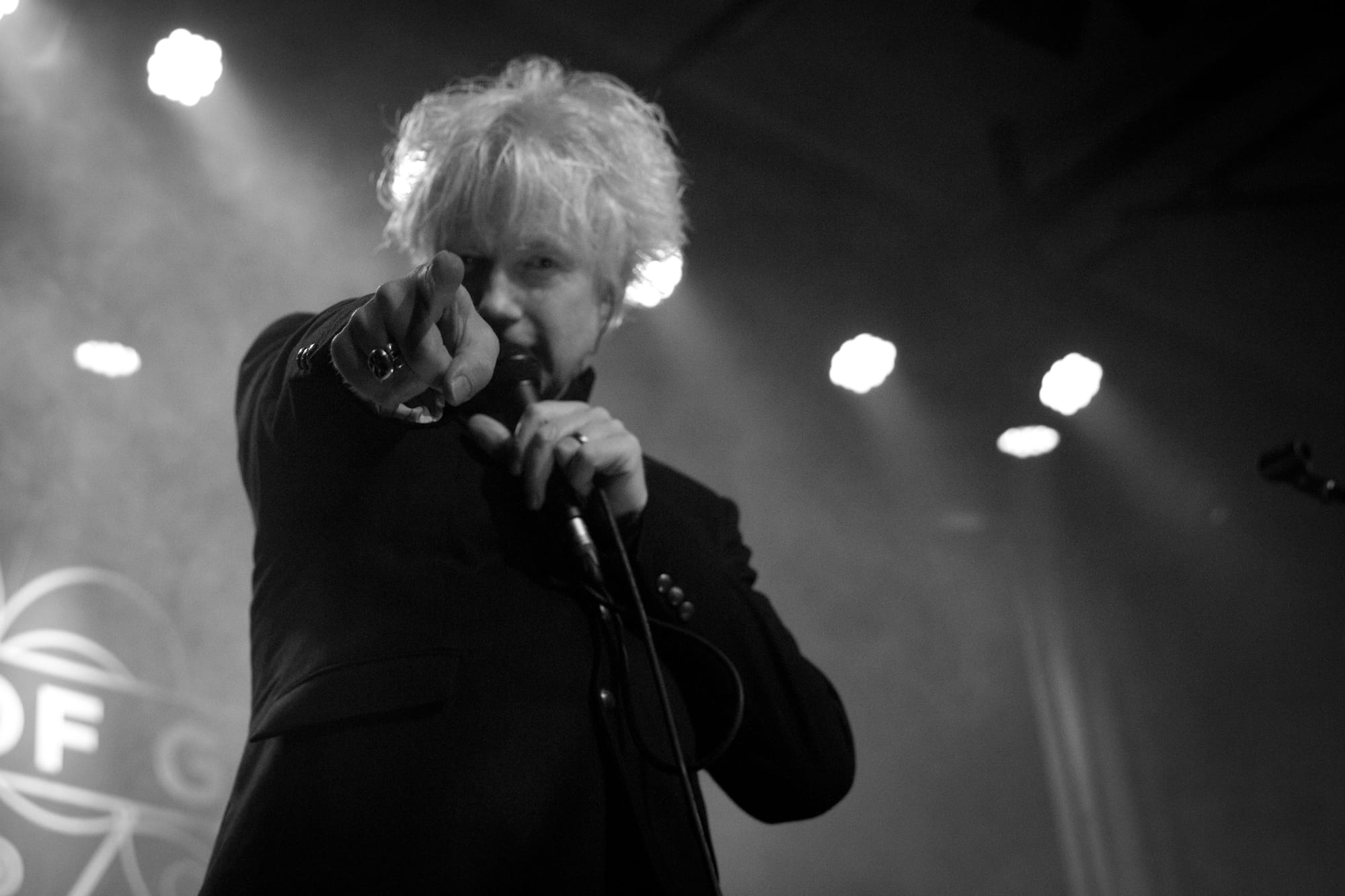
As the artist Michael Sele moved more into focus, so did his private life. And in 2019, a drastic event would further change Sele’s self-perception and perspective: heart surgery.
Altin Gün or: how to discover music live
Without prior preparation, our author found himself at Altin Gün’s concert in Zurich to refind the joy of concert reviews again.
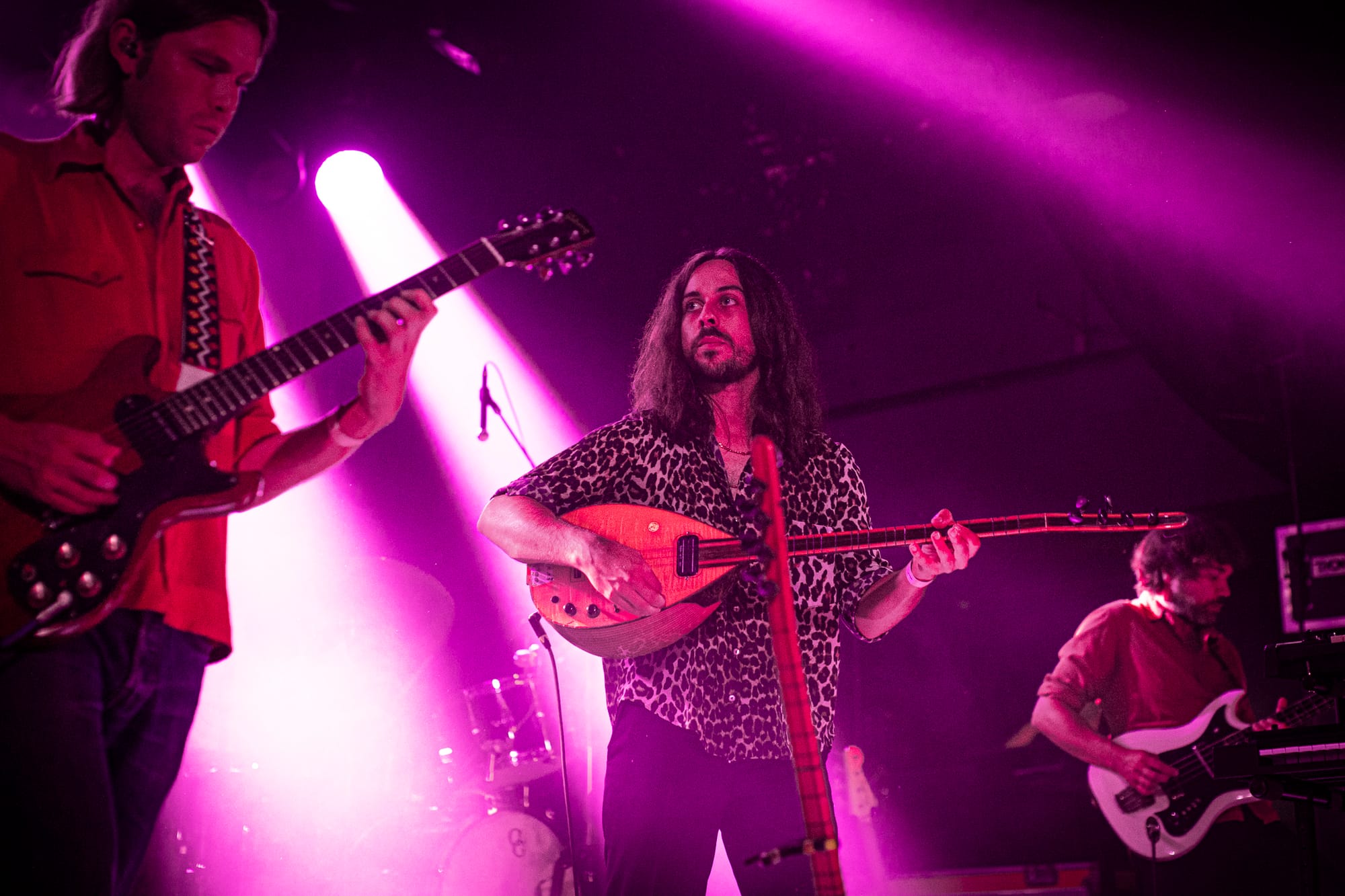
I am going to level with you: concert reviews are not my favourite thing to write anymore.
The first time I covered a concert was in 2008, and since then, I‘ve written hundreds of reports. They were exciting at first, also a welcome treat, these free entries, as a quasi salary for the unpaid work. But they also quickly become formulaic and, as a result, boring to write. And a bored writer makes for a boring read.
Even worse, concert reviews are notoriously resistant to concepts and formats. You can‘t really squeeze them in a preconceived idea because you never know what happens that night.
Now, how do I get unstuck?
Fandom Exploited
He was an artist; I was a fan. Then, he wanted to have sex with me. A reflection 14 years later.
I thought long and hard about publishing this story. Not because it is particularly painful or difficult to tell. But maybe because there lingers this notion of insignificance, a feeling that this specific story is not relevant enough to contribute to the discussion of the artist-fan relationship.
However, the more I reflected on what happened 14 years ago, the more I felt it was worth telling despite all my doubts.
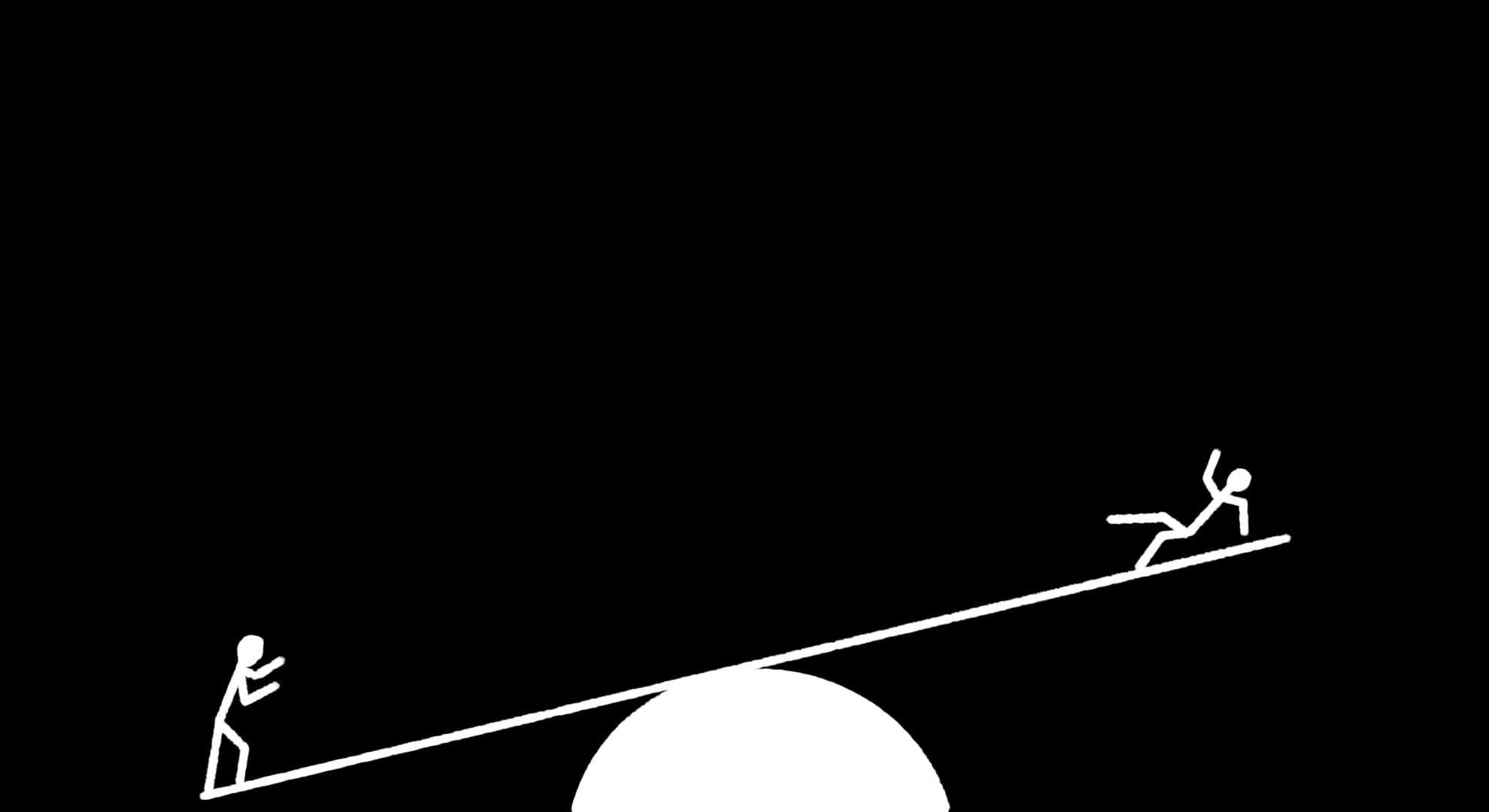
It all started in 2010 when I attended a reading in Zurich by an author and musician. The artist, who shall remain anonymous, a man, was then 43 years old. And me, I was 19.
I was fascinated by this artist’s lyrical, dark, and obscure oeuvre. Naturally, I was also excited to witness him, even publishing a report about the event later. Strategically savvy, I took a seat in the front row, the best place to take photos that should illustrate the report.
The reading began harmless but was divided into two parts. During the break, I met a friend, and for the reading’s second half, we sat a bit further back. However, as soon as the artist returned to the stage, he noticed the empty chair. He leapt on it and asked where the young man went. If he was afraid, he asked.
I revealed myself, obviously amused and replied that I was enjoying the company of my friend. «I will teach you the meaning of fear,» he said and jumped towards me, a banana in hand, which I should hold while he put a condom on it. It was an absurd scene but fitting with the artist’s sometimes quite bizarre work.
Two days later, I published the report. With social media being nowhere near its peak, I wrote an entry on the artist’s guest book on his website, again revealing that I was the missing young man from the front row.
Support us here.
From there on, a lively email conversation developed that soon moved to the MSN Messenger. He told me he would still be in Switzerland for another week as he was collaborating on a project with a local artist.
The chat, however, did not remain within the boundaries of small talk and professional topics. Life, love, depression, all the things you would talk about with a good friend. I felt special, I felt proud that we discussed on this level for hours and days.
One recurring topic would turn out to be far more critical: the first sexual experiences.
He told me about his first time with another man. Initially, I thought he maybe was experimenting, but I was probably wrong. He asked me if I was bisexual. I said no, but he was not satisfied with that answer, kept asking and pushing again and again.
In an attempt to keep our platonic relationship going, I unsuccessfully tried to find a partner for him. But he already noticeably lost interest in me, and ultimately stopped the communication.
However, only two days later, I received an email from him, offering me an interview to talk about the collaboration he was doing. It would be published by a big magazine in Germany. I agreed to do it. All went well, and he made no further advances.
Join Negative White
We believe music is better when shared with others.
No spam, only music. Unsubscribe anytime.
Abuse of Power
Everything you have read about this encounter is a slightly edited version of a story—actually, more like a diary entry—I wrote down on August 18, 2010. Written with the perspective on an impressionable teen.
All those years ago, I did not think too much about the affair, even taking it as a funny anecdote I could tell a while later. There was no public debate about the pitfalls of artist-fan relationships, nor was I mature and wise enough to recognise what transpired. I never backed up the chats; no evidence besides my retelling of the account and the reports published about the reading and the collaboration.
Today, I see it from a different perspective.
If this all had happened to a woman, the story would have been a different one—and for all the right reasons. And I feel my hesitance to tell this story partly stems from the fact that men are still less sensitised on harassment and abuse of power because men are more likely to be perpetrators than victims. But when it happens, men tend to wipe these things aside.
Now, it is apparent to me that it was an abuse of power. A 43-year-old man, a sort of legend in the scene, certainly famous and with an amount of influence, which he also demonstrated by organising this writing gig. And on the other side, there I was, a 19-year-old boy, a fascinated fan, feeling honoured to receive this level of attention.
What is abuse of power?
«Abuse of power can occur when the often one-sided or at least asymmetrical dependency is not organised in an appropriately responsible manner but consciously or unconsciously for the material or immaterial benefit of the person primarily responsible. All forms of cross-border communication and physical contact with a degrading effect can be regarded as abusive.» — by German Musicological Society (GfM)
While I cannot tell if his actions were intentional, his behaviour did cross several boundaries. And one could argue that a 43-year-old man has the capacity to know what he is doing.
Reflecting on my experience, I am surprised at how unsuspecting I was but also how naturally the conversation developed. The moment he asked me if I was bisexual, yes, that caught me off guard. But the pull to engage with a celebrity quickly washed away the irritation. I took it almost as a compliment, being courted like that. It escalated in tiny steps—one message at a time.
And I keep asking myself: What would have happened if I were bisexual? Would a possible sexual encounter have been consensual? Can it ever be with these vast gaps in age and status?
Finally, at the latest, with the discussion around the accusations against Rammstein’s Till Lindemann, the artist-fan relationship is being critically dissected.
Question Your Relationship With Artists
It would take me a couple of years until I began severing ties with blind fandom, nurtured by some obviously annoying and bad experiences with artists and a growing experience in journalistic distance.
There is sadness in losing the ability to unconditionally fan for someone. Keeping everything at arm’s length bears the danger of never being truly vulnerable, never really grasping the emotional depths transported in art.
But there is a case to be made for a constant reflection of our individual relationships with the artists, their work, and ourselves. It is not a black-and-white separation of artist and art but an ever-changing conversation informed by actions, morals, and ethics. Artists are humans, and no matter how famous they get, they remain complex characters—with all their talents but all their flaws and shortcomings too.
It is an argument one needs to have on an individual level because there is no guarantee that the artist is a decent person. More than ever, celebrities are under increasing scrutiny, and rightfully so. We see exploitative behaviour everywhere, which can have severely dire consequences than what I experienced.
With that said, it does not change the fact that the responsibility of how to shape any relationship where there is a difference in power, lies overwhelmingly with the person who holds the bigger power.
Tackle The System
Whether it is the «Row Zero» concept with Rammstein, the experience Alice Glass had at Crystal Castles, or even the recent case of a Swiss artist, there are plenty of examples of (sexual) harassment and abuse of power. We see these abusive behaviours in every facet of cultural creation, sports, and society at large.
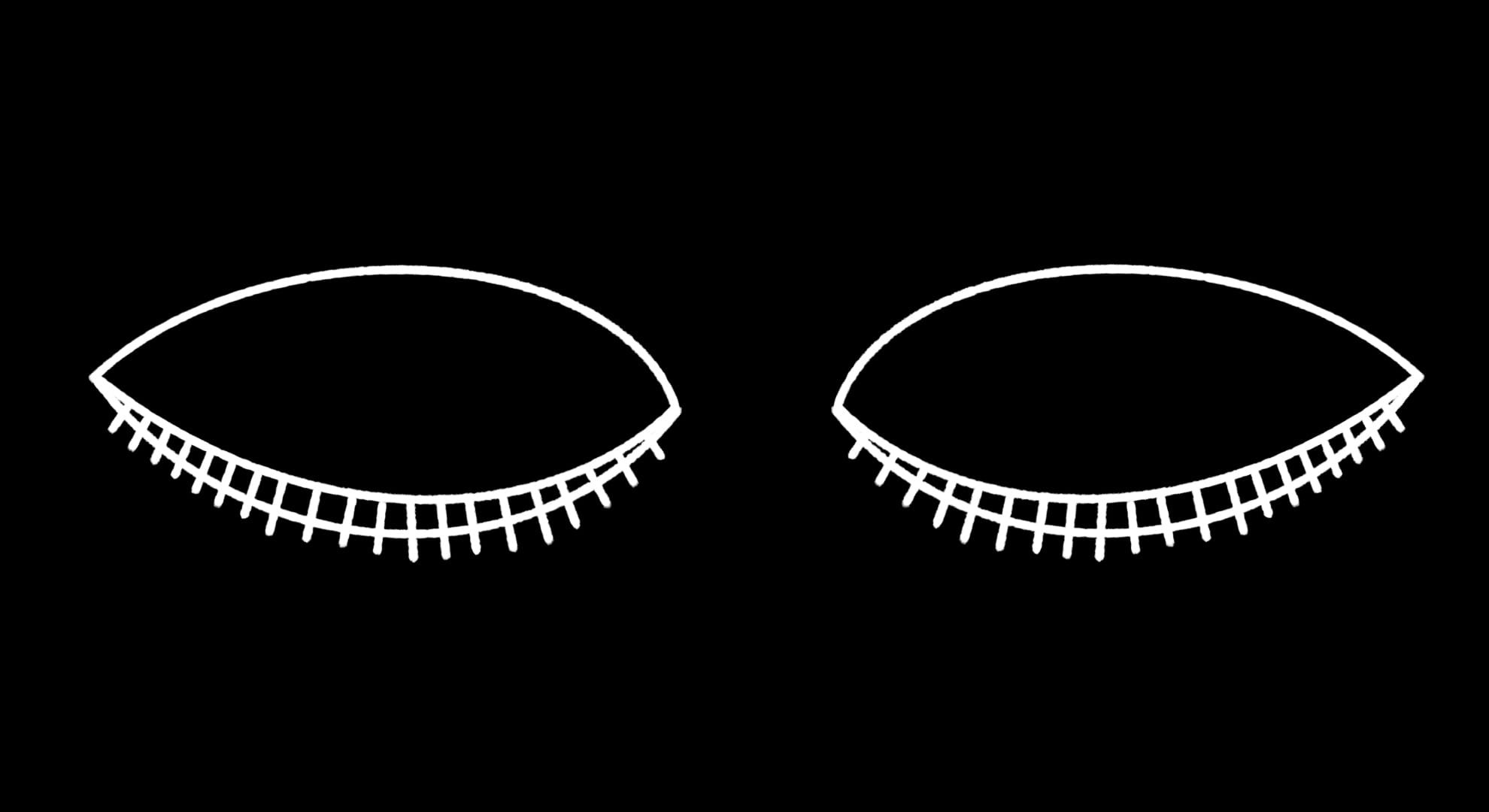
While individual reflection on whether and how we put artists, creators, and celebrities on a pedestal is necessary, it is even more crucial to question the environment allowing their behaviour. There will always be people willing to abuse their status—and it is not usually a one-time thing.
If there is a system in place—for example, in music—where concert organisers, promoters, managers, labels, and even the media ignore it, look the other way, or worse, enable the behaviour, abusers can thrive and continue. We need to tackle these underlying systemic issues more than anything else.
• 143.ch
• Opferhilfe Schweiz
